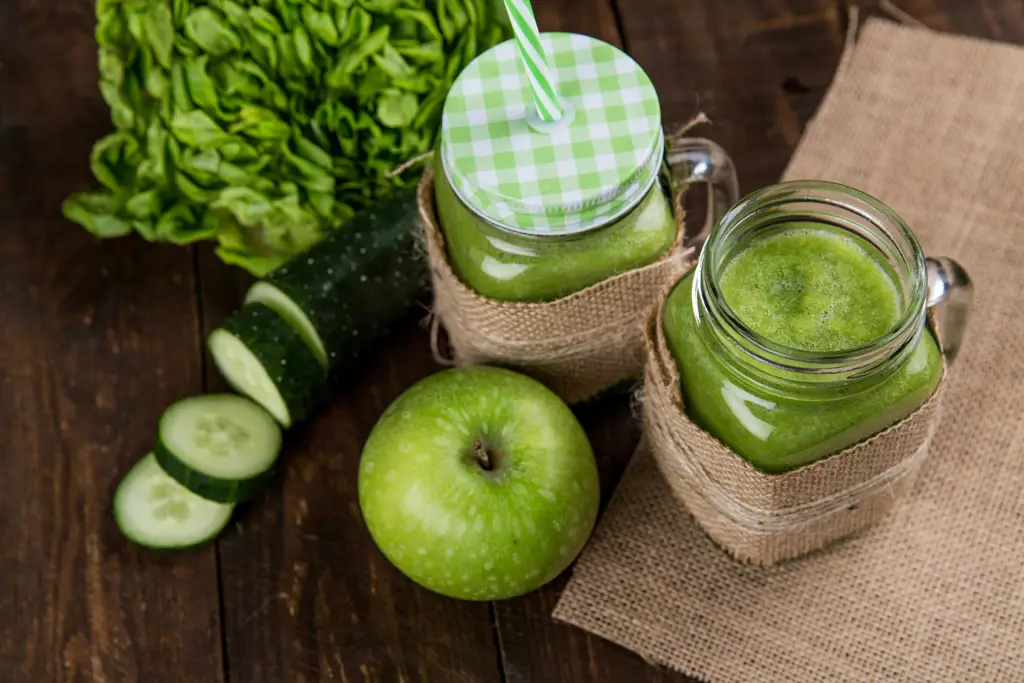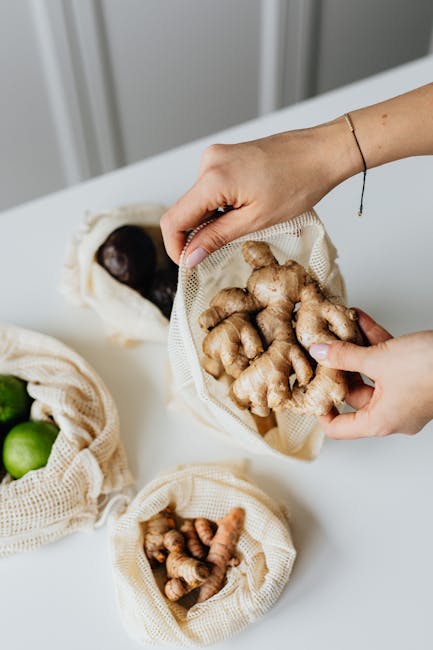The humble cucumber, a ubiquitous ingredient in cuisines worldwide, forms the refreshing base of our healthy smoothie recipe today. While pinpointing the exact origin of cucumber consumption is difficult due to its ancient history, evidence suggests its cultivation began in India around 6,000 years ago, spreading gradually across the globe via trade routes. Ancient civilizations, including the Egyptians, Greeks, and Romans, prized cucumbers for their cooling properties and medicinal uses, incorporating them into various dishes and even using them in beauty treatments. The cucumber’s journey from ancient medicinal herb to modern-day smoothie ingredient highlights its enduring appeal and versatility.
Cucumber’s cultural significance is rich and varied. In some cultures, it symbolizes purity and freshness, often featured in religious ceremonies and festive occasions. In Indian cuisine, it’s a staple, used in both savory and sweet dishes, showcasing its adaptability. Across the Mediterranean, it’s a common ingredient in salads and dips, reflecting its association with light and refreshing summer fare. Its popularity is further evidenced by the sheer volume produced globally; according to the Food and Agriculture Organization of the United Nations, China is the world’s leading producer of cucumbers, contributing significantly to the global supply. This widespread cultivation and consumption underscore the cucumber’s enduring place in culinary traditions across the world.
Smoothies themselves, while a relatively recent addition to the global food landscape, have quickly become a popular way to consume fruits and vegetables. Their convenience and versatility make them ideal for busy lifestyles, and the rise of health-conscious eating has propelled smoothies to the forefront of modern diets. Statistics show a significant increase in smoothie consumption in recent years, driven by a growing awareness of the benefits of incorporating more fruits and vegetables into one’s daily intake. This trend has led to countless variations, from classic fruit smoothies to more innovative combinations incorporating leafy greens, vegetables, and even protein powders. Our cucumber smoothie recipe fits perfectly within this trend, offering a refreshing and healthy option that leverages the cucumber’s inherent benefits.
This recipe harnesses the cucumber’s high water content, contributing to hydration and aiding digestion. It’s also a good source of vitamins and minerals, including Vitamin K, which is essential for blood clotting. Furthermore, cucumbers are relatively low in calories and carbohydrates, making them a suitable choice for those watching their weight. By combining the cucumber with other healthy ingredients, we create a nutritious and delicious smoothie that is both satisfying and beneficial to your overall well-being. Prepare to discover a refreshing and healthy way to enjoy this ancient vegetable in a modern, convenient format.
Ingredients and Measurements
This recipe for a healthy cucumber smoothie focuses on fresh, nutrient-rich ingredients and allows for customization to your taste preferences. Precise measurements are provided below, but remember that you can adjust them slightly depending on your blender’s capacity and your desired consistency. The key is to maintain a good balance of liquid to solids for a smooth, easily drinkable result.
Cucumber: We’ll start with 1 medium-sized cucumber (approximately 8-10 ounces or 225-280 grams). Choose a firm, crisp cucumber free from bruises or blemishes. Thoroughly wash the cucumber before using it to remove any pesticides or dirt. Peeling is optional; leaving the skin on provides additional fiber and nutrients. However, if you prefer a smoother texture, feel free to peel it. If using a smaller cucumber, you may need to add a little extra liquid to achieve the desired consistency.
Leafy Greens: Adding leafy greens significantly boosts the nutritional value of your smoothie. We recommend using 1 cup (approximately 20 grams) of packed spinach or kale. Spinach offers a milder flavor, while kale provides a slightly more robust taste. Both are excellent sources of vitamins A, C, and K. Ensure your greens are fresh and thoroughly washed before adding them to the blender. If using frozen greens, you may need to reduce the amount of liquid accordingly.
Liquid Base: The liquid base determines the consistency of your smoothie. We suggest using 1 cup (240 ml) of unsweetened almond milk or water. Almond milk adds a subtle nutty flavor and creaminess, while water keeps the smoothie lighter and less calorie-dense. You can also experiment with other liquids such as coconut water (for electrolytes), unsweetened apple juice (for sweetness), or even green tea (for an antioxidant boost). Adjust the amount of liquid depending on your preferred thickness.
Healthy Fats: Incorporating healthy fats contributes to satiety and helps your body absorb fat-soluble vitamins. We recommend adding 1 tablespoon (15 ml) of chia seeds or flax seeds. These tiny seeds are nutritional powerhouses, packed with omega-3 fatty acids and fiber. Alternatively, you could use 1/2 an avocado for a creamier texture and additional healthy fats. Remember that adding fats will increase the calorie count.
Optional Sweetener and Flavor Enhancers: While this recipe aims for natural sweetness from the cucumber, you may wish to add a touch of sweetness or extra flavor. Consider adding 1/2 a small ripe banana (for natural sweetness and creaminess) or a squeeze of fresh lime juice (for a zesty kick). Avoid using excessive amounts of added sugar; the natural sweetness of the fruits and vegetables should be sufficient. Start with small amounts and adjust to your preference.
Important Note: Always wash all produce thoroughly before using it. Adjust ingredient quantities to suit your preferences and blender capacity. If your smoothie is too thick, add more liquid; if it’s too thin, add more cucumber or greens. Enjoy experimenting with different combinations to find your perfect healthy cucumber smoothie recipe!
Preparation Phase: Washing and Chopping
Before you even think about blending, the foundation of a great cucumber smoothie lies in proper preparation. This begins with meticulously washing and chopping your ingredients. We’ll focus on the cucumber, but the principles apply to any other fruits or vegetables you might add.
Washing your cucumber is crucial for hygiene and removing any pesticides or dirt. Don’t just rinse it quickly under the tap. Thoroughly scrub the cucumber’s skin using a vegetable brush. This removes any lingering soil or debris that might be hiding in crevices. Pay particular attention to the ends, which often accumulate dirt. After scrubbing, rinse the cucumber under cold running water for at least 30 seconds to ensure all the residue is washed away. If you’re using organic cucumbers, a less vigorous wash is sufficient, but thorough rinsing is still necessary.
Next comes chopping, and the method depends on your preference and blender. For a smoother smoothie, smaller pieces are best. For a chunkier texture, you can opt for larger pieces. For this recipe, we recommend chopping the cucumber into roughly 1-inch cubes. This size allows for efficient blending without leaving large, unprocessed pieces. For a standard smoothie using one medium-sized cucumber (approximately 12 inches long), this will yield approximately 1.5 to 2 cups of chopped cucumber. You can adjust the quantity based on your desired smoothie volume and cucumber size.
Use a sharp knife for efficient and safe chopping. A dull knife requires more force and increases the risk of accidents. Always cut away from yourself and keep your fingers curled inwards to protect them. Begin by cutting the cucumber in half lengthwise. Then, slice each half into half-moon shapes, and finally, dice those half-moons into 1-inch cubes. If you’re using a food processor, you can pulse the cucumber several times until it reaches the desired size, but ensure you don’t over-process, which can lead to a watery texture.
Consider the type of cucumber you are using. English cucumbers, with their thinner skin and fewer seeds, often require less preparation. However, even with English cucumbers, thorough washing is still necessary. With regular cucumbers, you might want to peel the skin if you prefer a smoother texture and less fibrous smoothie; however, the skin contains beneficial nutrients, so leaving it on is perfectly acceptable.
Once you’ve chopped your cucumber, it’s ready to be added to your blender. Remember to always wash your cutting board and knife thoroughly after use to maintain kitchen hygiene. Proper preparation is key to a delicious and healthy cucumber smoothie.
Blending Instructions
Creating a perfectly smooth and delicious cucumber smoothie requires attention to detail in the blending process. Follow these steps for optimal results, ensuring a refreshing and healthy drink every time.
Start with the liquids: Begin by adding your liquid base to the blender. We recommend using approximately 1 cup (240ml) of cold water or unsweetened almond milk. You can adjust this amount depending on your desired consistency. If you prefer a thicker smoothie, use less liquid; for a thinner smoothie, use more. Using cold liquid is crucial as it helps to chill the smoothie and prevent it from becoming lukewarm during blending.
Add the cucumber: Next, add 1 medium-sized cucumber (approximately 8 ounces or 225 grams), peeled and roughly chopped. Avoid using overly large pieces, as this can hinder the blending process and potentially damage your blender. Smaller pieces will ensure a smoother, more consistent texture.
Incorporate other ingredients: Now it’s time to add your chosen additional ingredients. Our recipe suggests ½ cup (70 grams) of spinach for added nutrients and a vibrant green hue. Remember to wash your spinach thoroughly before adding it to the blender. You can also add other ingredients like ½ a ripe avocado for creaminess, or a squeeze of fresh lime juice for a zesty kick. Add these ingredients gradually, allowing the blender to incorporate them fully before adding more.
Blend on low speed initially: Begin blending on a low speed, gradually increasing to medium and then high as needed. This helps to prevent splashing and ensures that all ingredients are properly incorporated. Start on low to avoid a messy explosion!
Blend until smooth: Blend for approximately 1-2 minutes, or until the smoothie reaches your desired consistency. You may need to stop and scrape down the sides of the blender with a spatula a few times to ensure everything is thoroughly mixed. Don’t be afraid to stop and scrape! This ensures that all the ingredients are evenly blended and you don’t end up with chunks of cucumber or spinach.
Adjust consistency: If the smoothie is too thick, add more liquid, a tablespoon at a time, while blending. If it’s too thin, add a few ice cubes and blend again until you reach your preferred consistency. Taste and adjust: Once you’ve achieved the desired consistency, taste the smoothie and adjust seasonings as needed. A pinch of salt can enhance the flavors, and a touch of honey or maple syrup can add sweetness if desired. However, remember to keep it healthy and avoid excessive added sugars.
Serve and enjoy: Once you’re happy with the taste and texture, pour your refreshing cucumber smoothie into a glass and enjoy immediately. Garnish with a cucumber ribbon or a sprig of fresh mint for an extra touch of elegance.
Important Note: Always ensure your blender is properly cleaned after each use to maintain its efficiency and hygiene.
Serving Suggestions
Your vibrant and healthy cucumber smoothie is ready! But how you serve it can significantly enhance the overall experience. Beyond simply pouring it into a glass, consider these suggestions to elevate your smoothie enjoyment and maximize its nutritional benefits.
For a refreshing and simple approach: Pour 8-10 ounces of your cucumber smoothie into a tall glass filled with ice. A chilled glass will help keep your smoothie cool longer. For an extra touch, garnish with a thin cucumber ribbon or a sprig of fresh mint. The mint adds a pleasant aroma and complements the cucumber’s subtle flavor.
To add a creamy texture: If you prefer a thicker, creamier consistency, add a scoop (approximately 1/4 cup) of plain Greek yogurt or a tablespoon of nut butter (almond, cashew, or peanut) to your smoothie before blending. This will not only enrich the texture but also add a boost of protein and healthy fats, contributing to a more satiating and nutrient-dense drink. Remember to adjust the liquid accordingly to achieve your desired consistency.
For a flavorful twist: Experiment with different additions to customize your smoothie’s taste profile. A squeeze of fresh lime or lemon juice (about 1/2 a lime or lemon) can add a zesty zing. A pinch of sea salt can enhance the flavors and balance the sweetness. Consider adding a small piece (about 1/4 inch) of fresh ginger for a subtle spicy kick, or a few drops of stevia or honey for a touch of sweetness, if needed. Always start with small amounts and adjust to your preference.
Make it a meal: Elevate your cucumber smoothie into a complete meal replacement by adding nutritious ingredients like spinach (a handful), chia seeds (1 tablespoon), or oats (1/4 cup). These additions will increase the fiber and protein content, keeping you fuller for longer. Blend thoroughly to ensure a smooth consistency.
Presentation matters: Use attractive glassware to enhance the visual appeal of your smoothie. Consider using mason jars, elegant glasses, or even colorful straws to make it more inviting. If serving to guests, consider preparing individual servings in advance and storing them in the refrigerator until ready to serve. This ensures each serving is perfectly chilled.
Pairing suggestions: Your cucumber smoothie pairs well with a variety of healthy snacks. Consider serving it alongside a small portion of whole-grain crackers, a handful of berries, or a side of avocado toast. These pairings provide a balanced meal or snack, offering a mix of textures and flavors.
Storage and reheating (if applicable): Store leftover smoothie in an airtight container in the refrigerator for up to 24 hours. Do not refreeze. If the smoothie has thickened slightly after refrigeration, simply add a little water or another liquid to thin it out before serving.
Enjoy responsibly: While cucumber smoothies are healthy, remember moderation is key. Consume them as part of a balanced diet and lifestyle.
Tips and Tricks for a Better Smoothie
Creating the perfect cucumber smoothie involves more than just throwing ingredients in a blender. Follow these tips and tricks to elevate your drink from good to amazing!
Start with the Right Cucumber: Choose firm, crisp cucumbers for the best texture. Avoid those that are soft or have blemishes. About 1 cup of chopped cucumber (approximately one medium-sized cucumber) is a great starting point for a single serving. You can adjust this based on your preference for cucumber intensity.
Liquid Base Mastery: The liquid you choose significantly impacts the smoothie’s consistency. Water is the simplest option, providing a light and refreshing base. For a creamier texture, use unsweetened almond milk or coconut water (about ½ to ¾ cup). Fruit juice (like apple or pineapple juice, about ¼ to ½ cup) adds sweetness and flavor, but be mindful of added sugars. Experiment to find your ideal liquid-to-solid ratio.
Boosting Flavor and Nutrition: Don’t limit yourself to just cucumber! Adding other ingredients enhances both the taste and nutritional profile. A handful (about ½ cup) of spinach or other leafy greens adds a boost of vitamins and minerals without significantly altering the flavor. A small piece of ginger (about 1 inch, peeled and roughly chopped) adds a spicy kick and aids digestion. A squeeze of lime or lemon juice (about ½ to 1 tablespoon) brightens the flavor and provides a refreshing tang.
Sweetening Strategically: While cucumber smoothies are naturally refreshing, you might want to add a touch of sweetness. Avoid refined sugars. Instead, opt for natural sweeteners like a small amount of honey (1-2 teaspoons), maple syrup (1-2 teaspoons), or a ripe banana (about ½ a medium banana) for creaminess and sweetness. Remember that the sweetness of other fruits you add will also impact the overall sweetness.
Texture Perfection: The ideal cucumber smoothie has a smooth, consistent texture. To achieve this, chop your ingredients into small pieces before blending. Blend on high speed for at least 30-60 seconds, stopping to scrape down the sides as needed. If your smoothie is too thick, add more liquid; if it’s too thin, add more cucumber or frozen fruit.
Chill for Optimal Enjoyment: For an extra refreshing experience, chill your smoothie before serving. You can add a few ice cubes during blending or chill the blended smoothie in the refrigerator for 15-20 minutes. Avoid over-blending with ice, as this can lead to a watery consistency.
Get Creative with Add-ins: Once you’ve mastered the basics, experiment with other ingredients to create unique flavor combinations. Try adding avocado for creaminess, berries for sweetness and antioxidants, or chia seeds for added fiber and omega-3 fatty acids. The possibilities are endless!
Professional Recommendation: Remember to always wash your produce thoroughly before blending. If you have any dietary restrictions or allergies, be sure to check the ingredients of any added products before incorporating them into your smoothie.
Nutritional Information (per serving)
This recipe yields approximately two 16-ounce servings of Cucumber Smoothie. The nutritional information provided below is an estimate and may vary slightly depending on the specific ingredients used (e.g., brand of yogurt, type of cucumber). This analysis assumes the use of one medium-sized cucumber (approximately 12 ounces), 1 cup of plain Greek yogurt (nonfat), ½ cup of spinach, and ½ cup of water. All values are approximate.
Calories: Approximately 150-180 calories per serving. This relatively low calorie count makes this smoothie ideal for weight management or as a healthy snack. The calorie count can be adjusted by altering the amount of yogurt or adding other ingredients like fruits (which would increase calories).
Protein: Approximately 10-12 grams per serving. The primary source of protein in this smoothie is the Greek yogurt. Adequate protein intake is crucial for building and repairing tissues, supporting a healthy immune system, and maintaining satiety. Greek yogurt is a particularly good choice as it is a complete protein, containing all nine essential amino acids.
Fat: Approximately 3-5 grams per serving. The majority of the fat in this smoothie comes from the Greek yogurt. Choosing nonfat or low-fat yogurt helps keep the fat content low. While some fat is essential for nutrient absorption and overall health, this recipe prioritizes a lower fat content to align with many healthy eating guidelines.
Carbohydrates: Approximately 20-25 grams per serving. The carbohydrates primarily come from the cucumber and a small amount from the yogurt. Carbohydrates provide your body with energy, and this smoothie offers a balance of carbohydrates without an excessive amount of added sugars.
Fiber: Approximately 3-4 grams per serving. The cucumber and spinach contribute significantly to the fiber content. Fiber is essential for digestive health, promoting regularity and helping you feel full and satisfied. Adequate fiber intake is linked to reduced risk of various chronic diseases.
Sugar: Approximately 5-7 grams per serving. The sugar content is naturally occurring from the cucumber and yogurt. This smoothie avoids added sugars, which is beneficial for maintaining healthy blood sugar levels and preventing weight gain.
Vitamins and Minerals: This smoothie is a good source of Vitamin K (from spinach and cucumber), Vitamin C (from cucumber), Potassium (from cucumber), and other essential micronutrients. The nutritional profile contributes to overall health and well-being. Remember that this is just one component of a balanced diet, and it is important to consume a variety of nutrient-rich foods.
Note: This nutritional information is a general guideline. For precise nutritional analysis, use a nutrition calculator and input the exact brands and quantities of ingredients used in your smoothie.
Recommendations: How to Make a Healthy Cucumber Smoothie
This refreshing cucumber smoothie is a fantastic way to incorporate more fruits and vegetables into your diet. To maximize its benefits and enjoyment, consider these recommendations:
Serving Suggestions: This smoothie is incredibly versatile. Enjoy it as a refreshing breakfast beverage, a midday pick-me-up, or a light post-workout recovery drink. For a thicker consistency, reduce the liquid slightly. For a thinner smoothie, add more liquid. Consider adding a few ice cubes for a colder, more refreshing experience. You can also adjust the sweetness to your liking by adding more or less honey or maple syrup. Experiment with adding a squeeze of fresh lime or lemon juice for an extra zing.
Storage Conditions: For optimal freshness and flavor, consume your cucumber smoothie immediately after preparation. However, if you have leftovers, store them in an airtight container in the refrigerator for up to 24 hours. Note: The smoothie may separate slightly upon refrigeration; simply give it a good shake before consuming.
Complementary Dishes: This smoothie pairs well with a variety of light and healthy meals. It’s a perfect accompaniment to a breakfast of whole-grain toast with avocado or a light salad with grilled chicken or fish. For a satisfying brunch, enjoy the smoothie alongside a fruit platter or some yogurt with granola. It also makes a great light lunch or pre-dinner snack.
Nutritional Information (Approximate per serving, based on a standard recipe): The exact nutritional content will vary depending on the specific ingredients and quantities used. However, a typical cucumber smoothie will provide a good source of vitamins and minerals. Expect approximately: Calories: 150-200; Protein: 4-6 grams; Carbohydrates: 25-35 grams; Fiber: 4-6 grams; Vitamin K: a significant portion of your daily recommended intake; Vitamin C: a moderate amount; Potassium: a good source. Please note: This is an estimate, and using different fruits and vegetables will alter the nutritional profile.
Calorie Control: To keep the calorie count lower, opt for low-sugar fruits like cucumber, spinach, and berries. Limit the amount of added sweeteners like honey or maple syrup. Consider using unsweetened almond milk or coconut water instead of high-calorie milk alternatives. Remember to always check the nutritional information of your specific ingredients.
Customization: Don’t be afraid to experiment! The beauty of smoothies is their adaptability. Try adding other fruits like berries, mango, or pineapple. Enhance the nutritional value with a handful of spinach or kale. For a creamier texture, add a tablespoon of nut butter or avocado. The possibilities are endless!
Important Note: If you have any allergies or dietary restrictions, always check the ingredients of all products used in your smoothie to ensure they are suitable for you. Consult with a healthcare professional or registered dietitian if you have specific dietary concerns or questions.





